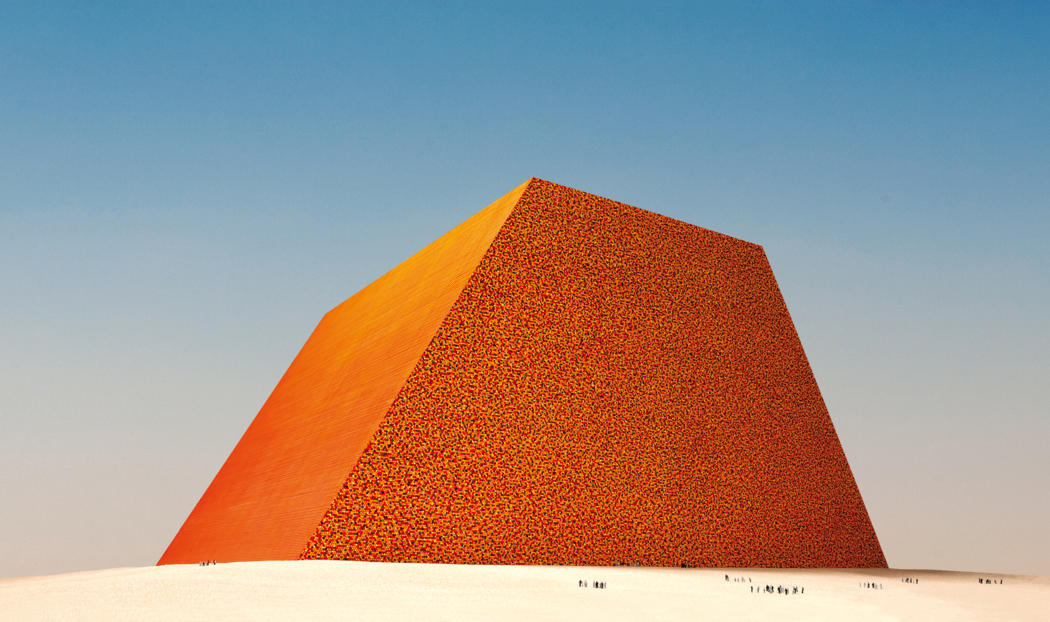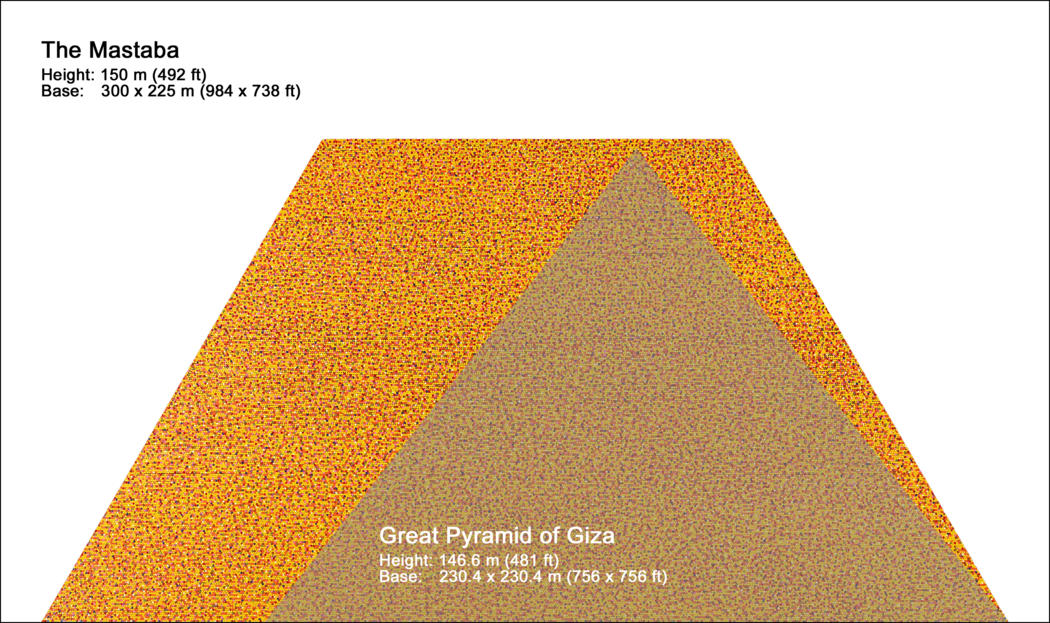Christo and Jean-Claude are known for producing some of the largest public art in the world over the last 50 years. The scale, vision and determination of the couple are exceptional in today's art world; there is truly no one else doing what they do the way they do it. And all on their own dime.
 Surrounded Islands, Miami, Florida 1980-1983
Surrounded Islands, Miami, Florida 1980-1983
Born on the same year, same day, same hour on other sides of the planet they met in Paris in 1958 and have worked together ever since. From very early on, they worked at a scale that was encompassing of the entire environment of the site and based around the aesthetics, architecture and landscape of the space they worked or an idea based on materials and structure that they sought out locations for.
Though initially working under simply "Christo" together, eventually they retroactively changed all the projects to Christo and Jean-Claude. They worked side by side though all of the projects and were inseparable though the years. One without the other was rare and all the details were overseen together. Christo is considered the larger creative force in the duo but they insist on the work as a compilation of two minds working towards common goals.
 Valley Curtain, Rifle, Colorado, 1970-1972
Valley Curtain, Rifle, Colorado, 1970-1972
Whether working with an environment as in Valley Curtain above, or a building as in Wall below the process of creating the work can take years or decades to see from initial sketches to final completion.
 The Wall - 13,000 Oil Barrels, Oberhausen, Germany, 1998-99
The Wall - 13,000 Oil Barrels, Oberhausen, Germany, 1998-99
One of my favorite things about Christo and Jean-Claude is their earnestness. They both claim 14 to 17 hour work days, 6 days a week. They adamantly refuse public funding for their projects. All of the funding for their work comes out of their own pockets. Christo initially makes dozens of sketches and preparatory drawings which he sells off as the project get's closer to fruition. As none of their works have been permanent installation, the only way to own a piece of the work for collectors is to purchase these drawings directly through Christo, though a cottage industry of postcards and photo prints has spouted up around every installation.
Secondly, everyone get's paid. From the site helpers to the architects and structural engineers that are often required to see through their ideas, there are no volunteers and everyone gets up to industry standard or above minimum wage.
All of their projects are completely recycled after they come down and have no permanent footprint on the environment they work in, though they proudly claim, "Years after every physical trace has been removed and the materials recycled, original visitors can still see and feel them in their minds when they return to the sites of the artworks."
 Wrapped Reichstag, preporatory sketch, 1971
Wrapped Reichstag, preporatory sketch, 1971
 Wrapped Reichstag, Berlin, 1971-95
Wrapped Reichstag, Berlin, 1971-95
Though both artists always claimed that their work was never about politics or conceptual art, certain works could be read as an interpretation of the political landscape they are presented in. Wrapped Reichstag was originally conceived 10 years after the rise of the Berlin Wall and the building's history is one steeped in the ideals of democracy. Covering the entire structure in a cloth could easily have been interpreted as a comment on the smothering of democracy on the other side of the wall, though the two would never entertain the idea.
Obviously the politicians of the times thought so. Endless proposals over a 24 year period were made; all refused. Only after the wall come down they were finally allowed to wrap the building. Despite the arduous journey to completion, they scheduled the installation lasted a mere two weeks and was then dismantled. Two weeks is the standard the couple set for viewing of all their temporary works. This ephemeral quality was evoked in all their works to this point.
 The Mastaba of Abu Dhabi (Project for United Arab Emirates), collage sketch, 1979
The Mastaba of Abu Dhabi (Project for United Arab Emirates), collage sketch, 1979
The latest project that is nearing a completion is The Mastaba a project begun in the late 70's. Using the oil barrel as it's basis, a familiar object to the duo, it will be their first permanent structure.
The math and scale of the project is overwhelming, but maybe not to a country that is known for ridiculous structures. 410,000 oil barrels and 150 meters tll, just 6 meters taller than the Giza pyramid and a mere 33 years and counting to the day it stands.
 The Mastaba of Abu Dhabi (Project for United Arab Emirates), scale model, 1979
The Mastaba of Abu Dhabi (Project for United Arab Emirates), scale model, 1979
A final unveiling date is not set. But with a $340 million price tag (Christo has been said to be working with "different investors" for this project in combination with the sale of his initial sketches and models) it will be the most expensive art object ever produced.
In reflecting on the unspoken political nature of the project, it's interesting that the war in Iraq has been sited as one of the delays; considering the use of drained oil barrels in an area containing the world's largest deposits of nonrenewable fossil fuels. Co-incidentally, another group of sketches were made around the same time frame for a Houston location.
A 30 month construction schedule and inevitable funding delays mean we would be lucky to see it finished in 2015. Sadly, Jean-Claude passed away in 2009 and will not be there for the christening.
In Jean-Claude's obituary in the New York Times, she was quoted speaking about her art being about “the quality of love and tenderness that we human beings have for what does not last.” Perhaps the permanency of this project could be seen as a gesture from Christo; a final monument dedicated to their love and work together.
All photos here from their amazingly simple and informative website, Christo and Jean-Claude. For a clear view of their values, check out the Most Common Errors.






















